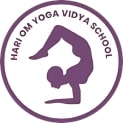
Introduction – Completing Your 200 Hour Yoga Teacher Training Course in Rishikesh
Finishing a 200 Hour Yoga Teacher Training Course in Rishikesh is more than just checking off a goal. It’s a personal evolution that changes the way you move, think, breathe, and live. Every early morning start, every moment of silence during meditation, every Sanskrit word chanted, and every posture held just a little longer, these become part of you. You arrive in Rishikesh as a student of yoga, and you leave with a deeper awareness of your body, your breath, and your purpose.
Rishikesh itself becomes your silent teacher. Surrounded by the powerful energy of the Ganges and the calm strength of the Himalayas, you can feel the roots of yogic wisdom around you. Whether you studied under a banyan tree or in a quiet ashram hall, something inside you shifted. The teachings here are not just spoken, they are lived, felt, and absorbed into your very presence.
Completing your training here means you’ve walked a path that many spiritual seekers have followed for centuries. You’ve immersed yourself in traditional Hatha, Vinyasa, pranayama, yogic philosophy, and the essence of mindful living. You’ve practiced not only poses but also patience, surrender, and self-reflection. That’s what makes this course transformative.
The Transition Phase – From Student to Teacher
This is where many new graduates feel both excitement and uncertainty. You’ve absorbed so much knowledge in 200 hours, but does that make you a teacher yet? The transition phase is all about application. You start seeing yoga not just as something you do, but something you guide others through. You begin refining your voice, your cues, and your ability to hold space. This is not an overnight shift. It’s okay to feel unsure at first. The important part is to keep showing up, on the mat and in your heart, with the intention to serve.
Should You Start Teaching Immediately or Keep Practicing?
This is a common crossroads. Some graduates jump straight into teaching, while others take time to deepen their personal practice. Neither path is wrong. If you’re brimming with enthusiasm and opportunities are flowing, start teaching small, even if it’s just friends or community classes. On the other hand, if you feel the need to digest everything you’ve learned, give yourself space. A consistent self-practice helps you embody the teachings more authentically, and that’s something your future students will feel.
Exploring Teaching Opportunities After Your 200 Hour YTT
Teaching doesn’t always begin with a fancy studio gig. Many graduates begin in parks, living rooms, corporate offices, or by offering donation-based classes. Some go online and find their niche in virtual spaces. If you completed your 200 Hour Yoga Teacher Training Course in Rishikesh, you already have an edge, many schools offer alumni support or job placements. Reach out to your mentors. Stay connected with your fellow trainees. These relationships often lead to unexpected opportunities.
Should You Pursue Advanced Training or Specializations Next?
The 200 hour course is just the beginning. Many teachers go on to do 300 or 500 hour certifications, or explore niche areas like prenatal yoga, trauma-sensitive yoga, yoga therapy, or Ayurveda. But don’t rush. Allow your curiosity to guide your next steps. Specializations make sense once you start noticing what truly lights you up, be it alignment, philosophy, anatomy, or healing practices. The best part? Learning never stops in the yoga world.
Building a Personal Practice and Teaching Style
The more you practice, the clearer your voice becomes. Your teaching style will not be a copy of your trainers, it will be a blend of your experience, values, and intuition. Some teachers bring a nurturing presence, others challenge their students physically and mentally. Some love mantra and mudra; others lean on alignment or pranayama. Explore different styles, experiment with class formats, and take time to reflect on what feels authentic. That’s how your teaching evolves into something truly your own.
Online Presence and Teaching Yoga in the Digital World
The digital space is more than just Instagram reels and YouTube tutorials. It’s where you can reach students beyond borders, build your brand, and create lasting impact. Start small, maybe with a blog, a newsletter, or a short series of Zoom classes. Share your journey authentically. If you’re a graduate of the best 200 hour yoga teacher training in Rishikesh, mention it. Tell your story. People connect with real energy, not just aesthetics.
Staying Connected with Your Yoga Family and Mentors
Your journey doesn’t end after the final certification ceremony. In fact, this is when the deeper bonds often begin. Stay in touch with your teachers and batchmates. Ask questions, share experiences, and support one another. These connections can keep you motivated, especially during the early days of teaching when self-doubt can creep in. A WhatsApp group, a monthly check-in, or even returning for a retreat can help nourish that sense of sangha, community.
Why Choosing the Right YTT School in Rishikesh Sets the Foundation
Where you begin your teaching journey matters. A good school not only imparts knowledge but holds space for personal growth, ethical understanding, and emotional support. Hari Om Yoga Vidya School in Rishikesh is known for doing just that. From experienced teachers to traditional lineage and supportive mentorship, the foundation you build here carries you forward confidently into the teaching world.
Conclusion – Your Journey as a Yoga Teacher Has Just Begun
The 200 hour yoga teacher training is not an endpoint, it’s your launchpad. It gives you tools, insights, and confidence, but the real teaching begins now, with each student you meet, each class you hold, and each breath you take with awareness. Be patient. Be curious. And above all, stay connected to why you chose this path in the first place. That purpose will guide you through every stage of your journey.



